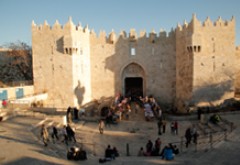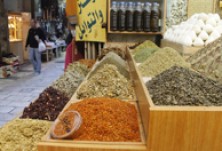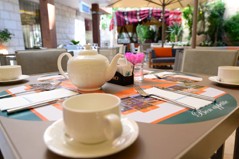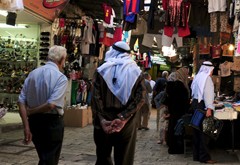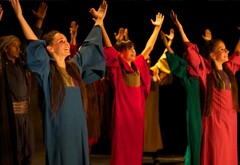Site Importance and Access
In order to get a better idea about the Church of the Holy Sepulcher and examine its concealed parts, and to identify its borders and extensions since its construction during the era of Emperor Constantine the Great, it is recommended to visit St. Alexander’s Church and the Russian excavations. Leaving the Holy Sepulcher, make a left (east) turn past the entrance of Suq Aftimos and façade of the German Church of Our Savior. A brick-color wall just before the Khan Al-Zaitand Suq al-Attarin junction is part of St. Alexander’s Church. Entering it requires a small fee of five shekels, and the site is open all week (except Sundays) from 9:00 a.m.-1:30 p.m. and 3:00-5:00 p.m.
The Old and the New
The external, architectural fabric of St. Alexander’s does not reflect what is inside the site. The stone façades and the spacious internal structure and high walls reflect the mosaic architectural style typical of the second half of the 19th century.
Site Ownership and Excavations
The site was acquired in 1859 AD by the Russian government. After the establishment of the Russian Palestinian Orthodox Association by Emperor Alexander III on March 8, 1882, a series of excavations began in the site, financed by Duke Sergei Alexandrovich, Chairman of the Association and brother of Emperor Alexander III. The present building, which contains a modern church, offices, and archaeological artifacts found during excavations, was built later.
Archaeological Remains Found
In order to understand the whole scene, it must be connected to the archaeological remains found at the Zalatimo Confectioners, which can be generally described as follows:
- Remains of what is known as the Governance Gate, dating back to the 1st century AD, and most likely built by King Herod (37-4 BC).
- The remains of an arch and two pillars dating back to the era of Emperor Hadrian at the beginning of the 2nd century (123) AD, from the Venus (Aphrodite) Temple.
- Floors and walls from the front atrium: one of the four parts of the Helena and Constantine Church, dating back to the start of the 4th century AD.
Inside the Structure
A long corridor leads to the modern church and the abovementioned archaeological remains. In the northeast corner of the end of the church building, a small opening contains large bells, ending with a door opening to the Zalatimo shop, the start of the staircase leading to the Coptic Church and the entrance to the Holy Sepulcher from Deir al-Sultan, mentioned earlier.

